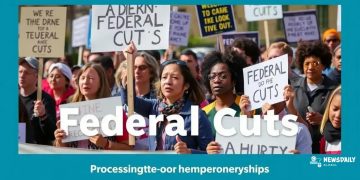How Trump’s tax plan could deepen the federal deficit

How Trump’s tax plan could deepen the federal deficit as it reduces revenue without guaranteed economic growth, thereby potentially increasing national debt and exacerbating income inequality.
How Trump’s tax plan could deepen the federal deficit is a pressing issue that raises many questions. What will be the long-term fiscal effects of these tax cuts? In this article, we’ll dive into the potential consequences for the economy and public services.
Understanding Trump’s tax plan
Understanding Trump’s tax plan is crucial for grasping its potential consequences on the economy. This plan aims to reshape the tax landscape significantly, impacting both individuals and businesses.
To start, let’s delve into the primary components of the plan. Key aspects include reduced tax rates, the elimination of certain deductions, and changes to corporate tax structures. These adjustments are designed to incentivize investment and stimulate economic growth.
Main Components of Trump’s Tax Plan
Here are some critical elements:
- Lower individual tax rates: The plan proposes to reduce the tax burden on middle-class families.
- Corporate tax rate reduction: This aims to encourage companies to invest in the U.S.
- Elimination of state and local tax deductions: This change can significantly impact taxpayers in high-tax states.
- Increased standard deduction: A move that simplifies filing for many Americans.
As we analyze these elements, it’s important to consider their broader implications. For instance, while lower tax rates may benefit individuals and businesses today, they could also lead to increased federal deficits in the long run if tax cuts aren’t accompanied by corresponding spending adjustments.
Moreover, understanding Trump’s tax plan requires looking at its impact on different demographics. For example, higher-income earners might benefit more from rate reductions compared to those with lower incomes who rely on specific deductions.
As this plan unfolds, we must consider the long-term economic ramifications. Will the anticipated growth truly materialize, or will the lowered rates contribute to a widening federal deficit? This remains a critical question for policymakers and citizens alike.
Potential impacts on the federal deficit
Exploring the potential impacts on the federal deficit related to Trump’s tax plan reveals complex economic changes. As tax rates decrease, the government may collect less revenue, which can contribute to a growing deficit.
This is particularly concerning when considering that large tax cuts often do not generate enough growth to offset lost revenue. Several key factors come into play when assessing these impacts.
Key Factors Influencing the Deficit
Here are some important elements that can affect the federal deficit:
- Economic Growth: If the tax cuts stimulate significant economic growth, they might generate additional tax revenue.
- Government Spending: Maintaining or increasing spending can exacerbate the deficit, especially if tax revenues fall short.
- Public Reaction: Changes in taxpayer behavior can influence how effective tax cuts are in generating new revenue.
- Global Economy: External economic factors can impact domestic revenue and spending.
Furthermore, understanding these impacts requires examining different scenarios. For instance, if businesses respond positively to tax cuts by investing in workers and new projects, the economy could expand. However, there is a risk that tax cuts may primarily benefit higher earners, leading to increased inequality and limited benefits for the broader population.
As discussions about Trump’s tax plan progress, many analysts are concerned about the long-term sustainability of such policies. The deficit may widen, impacting future generations who will face the consequences. Observers argue that proactive measures are necessary to mitigate these outcomes.
Economic implications of tax cuts

Understanding the economic implications of tax cuts is essential in evaluating Trump’s tax plan. Tax cuts can energize the economy, but they also carry risks that may affect long-term fiscal health.
Lower taxes typically put more money in consumers’ hands. This can lead to increased spending, which in turn can boost business revenues. However, the benefits might not be evenly distributed across different income levels.
Short-Term Impacts
In the short term, tax cuts can lead to:
- Increased Consumer Spending: More disposable income can lead consumers to buy more goods and services.
- Business Investment: Companies may increase investments in growth due to higher after-tax profits.
- Job Creation: An uptick in business activity could lead to more hiring.
- Immediate Economic Growth: Short-term GDP growth may result from enhanced consumer and business spending.
While these short-term benefits can appear promising, it is important to consider the longer-term effects, too. If the government loses revenue due to tax cuts without offsetting spending reductions, it can lead to higher deficits. This situation could affect government programs and services that many rely on.
Long-Term Consequences
Long-term implications of tax cuts involve potential challenges, such as:
- Increased Federal Debt: Persistent deficits can lead to larger national debt.
- Higher Interest Rates: A rising deficit could push interest rates up as the government borrows more.
- Dependence on Economic Growth: If growth doesn’t meet projections, the benefits of tax cuts may not materialize.
- Income Inequality: Tax cuts might disproportionately benefit higher earners, exacerbating inequality.
Balancing these immediate and long-term effects is key. Policymakers must weigh the potential for a bustling economy against the risk of escalating deficits that can hinder future growth. Thorough analysis is needed to ensure that tax cuts lead to sustainable benefits for all taxpayers.
Public opinion on Trump’s tax policy
Public opinion on Trump’s tax policy has been a divisive topic since its implementation. People hold varying views based on their personal financial situations and political beliefs. Some see benefits in the tax cuts, while others worry about their long-term impacts on the economy.
Many supporters argue that the tax cuts stimulate growth. They believe that lower corporate taxes encourage businesses to invest, create jobs, and raise wages. This optimism often stems from the immediate effects seen after tax reforms were enacted.
Survey Insights
Several surveys and polls have gauged public sentiment, revealing trends such as:
- Support for tax cuts:( Many respondents express satisfaction with the increased take-home pay they have seen.
- Concerns about fairness: Critics argue that the cuts disproportionately benefit wealthier individuals and corporations.
- Economic anxiety: A significant percentage of people worry about the potential for increasing national debt and future economic instability.
- Focus on inequality: Many feel that tax policy should address income inequality, which they perceive as worsening.
Views also vary based on demographic factors. For instance, lower-income individuals often feel more negatively affected by tax changes because they rely more on specific deductions and benefits. In contrast, higher-income earners tend to report feeling positively impacted by reductions in their tax rates.
In broad terms, the general sentiment around Trump’s tax policy reflects a clash between immediate, tangible benefits and long-term economic consequences. As debates continue, public opinion is likely to evolve with new economic data and fiscal realities impacting everyday lives.
Possible alternatives to consider
When discussing possible alternatives to consider instead of Trump’s tax plan, it’s essential to explore different approaches that could lead to fairer fiscal outcomes and sustainable economic growth. Policymakers have various options that may address some of the concerns regarding deficits and inequality.
One notable alternative is implementing a more progressive tax system. This system would ensure that higher-income individuals pay a larger percentage of their income in taxes. By increasing rates on wealthier citizens, the government could generate additional revenue without burdening middle and lower-income earners.
Other Options for Tax Reform
Several key alternatives include:
- Universal Basic Income: This concept involves providing a fixed amount of money to all citizens, potentially reducing poverty and inequality.
- Wealth Taxes: Implementing taxes on wealth accumulation can help reduce economic disparities and generate funds for public services.
- Closing Tax Loopholes: Addressing loopholes can ensure that corporations and wealthy individuals pay their fair share, leading to increased revenue without new tax increases.
- Increased Corporate Taxes: Raising taxes on profitable corporations could ensure they contribute adequately to the economy.
In addition to these alternatives, expanding tax credits for lower-income families can provide immediate relief. Increasing the Earned Income Tax Credit (EITC) may allow more families to keep more of their earnings. This would not only increase disposable income but also stimulate consumer spending.
Engaging in comprehensive economic analysis is crucial when considering these alternatives. Each approach comes with its own set of challenges and benefits, making it important to evaluate potential impacts carefully. Discussions on tax reform should aim to create a balanced system that promotes growth while ensuring fairness for all citizens.
FAQ – Frequently Asked Questions about Trump’s Tax Plan
What are the main features of Trump’s tax plan?
Trump’s tax plan includes lower corporate tax rates, the elimination of certain deductions, and increased standard deductions for individuals.
How might Trump’s tax plan affect the federal deficit?
The plan could increase the federal deficit as tax cuts may lead to reduced government revenue without corresponding spending cuts.
What alternatives to Trump’s tax plan have been suggested?
Alternatives include implementing a more progressive tax system, wealth taxes, and closing tax loopholes to ensure fair contribution.
How does public opinion vary regarding Trump’s tax policy?
Public opinion is mixed, with some supporting the tax cuts for stimulating growth and others concerned about fairness and long-term deficits.






